Clocks with the Telechron Type F motor were introduced ca. 1932. The field coil unit is similar to that for the type B but slightly more compact. The rotor unit is smaller than a type B rotor because one reduction gear was eliminated, increasing the output speed from 1 revolution per minute to 3.6 revolutions per minute. Type F rotors have a two piece housing, with the main body being a die cast piece. Type F rotors for alarm clocks have a long shaft on the output pinion, and those for time only clocks have a short shaft.
Clocks with the Type H motor were introduced in 1937. The Type H has the same internal gearing as the Type F, but has a stamped housing instead of the bulky cast housing of the Type F. Some early H rotors have a long shaft output pinion, but most have a short shaft. The H motor became standard for domestic clocks, and was used for many years.
Dave Friedlund, who rebuilds and sells Telechron rotors, has collected rotor data and interpreted their date codes. His sample data (combined with mine) show the following rotor production dates:
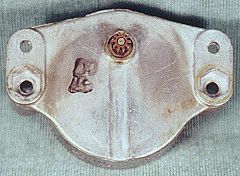

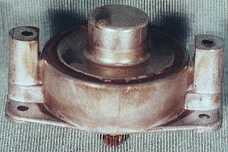
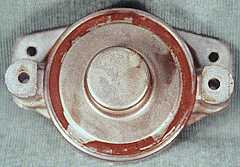
Die cast housing with integral spacer for mounting the field coil unit. The reddish-brown substance on the top of the rotor (below, right) was used to seal the housing where the two portions are joined. Date code 63 (March 1936).
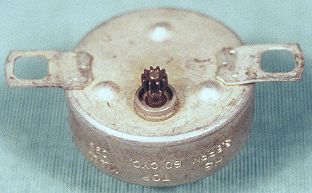
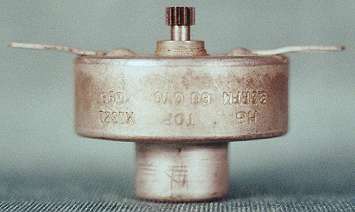
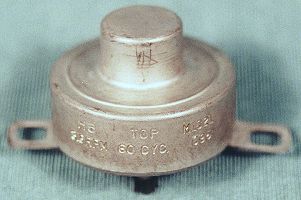
Rotor is labeled:
H3 TOP M13213.6 RPM 60 CYC. 095
The other side of the rotor is labeled: Telechron, Inc.
This example may be a later replacement for an early rotor, as the date code 095 means September 1950, if I am interpreting it correctly (first digit is the year, second digit is the month, and third digit is the decade - the code used from 1950 to 1990.)
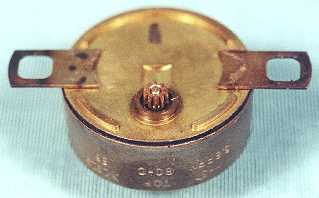
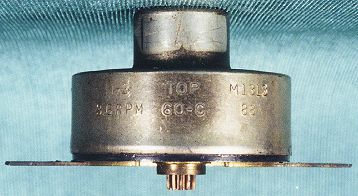
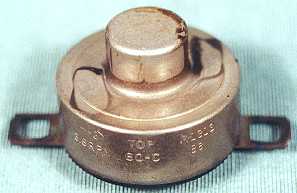
Rotor is labeled:
H-3 TOP M1313
3.6 RPM 60-C 88
The other side of the rotor is unlabeled.
88 is the date code for August 1938.


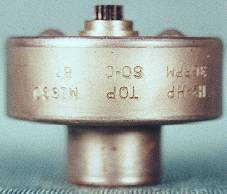
Rotor is labeled:
H3HP TOP M1630
3.6 RPM 60-C 87
The other side of the rotor is labeled:
Telechron Inc.
Ashland, Mass.
87 is the date code for July 1948.
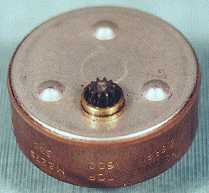
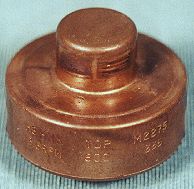
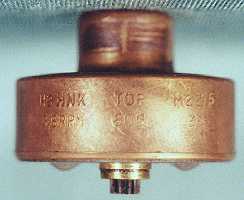
Rotor is labeled:
H3 HNK TOP M2275
3.6 RPM 60C 335
The other side of the rotor is labeled:
Telechron
335 is the date code for March 1953.
The meaning of the designations after the motor type (such as the H3 HNK or H3-HP) are unknown to me.
The most recently made H rotors (from the 1970's and on) have aluminum housings.
I have two other early H rotors with mounting feet. They are labeled:
H-3 TOP M1313
3.6 RPM 60-C 99_
99 is the date code for September 1939.
and:
60-3 6 710
H3 M1313
710 is the date code for October 1937.
There is no company name on either rotor
I have two type F rotors with standard length output pinion. They are both labeled as follows:
60-3 6 512
F1 M519
512 is the date code for December 1935.
The letter in a clock's model number indicates the type of motor it was originally designed for. For example, a 7H98 uses an H motor. Some clocks with F in the model number contain an H motor. A 7F59 contained the F1 rotor shown at the top of this page. Models 2F02, F 327*, 7F71 and 8F03 that I examined had a standard silver color H rotor. An alarm clock made for a type F motor would have been designed for the long shaft pinion. But starting in 1937 the same model would have been made to take the short shaft type H motor.
*Note on the F 327. This clock is listed as model 327 in Jim Linz's Telechron clock book. Here is a theory: Since model 327 was introduced in 1931, but the F motor was not introduced until 1932, the first ones had "B" motors. When the clock was redesigned to use the "F" motor, the F was added before the model number to identify this change.
Time only clocks made for a type F motor can have a regular type H motor put in. But alarm clocks made for a type F rotor were made for the long shaft output pinion, and needed the special long shaft H rotor when the original F rotor went bad.
Thanks to Jay Kennan for clarifying the dates of the F and H motors, and for explaining that the long shaft F rotors were for alarm clocks. Visit his Pappy's Telechron Clock Page for more history, and beautiful photos of hundreds of Telechron clocks.